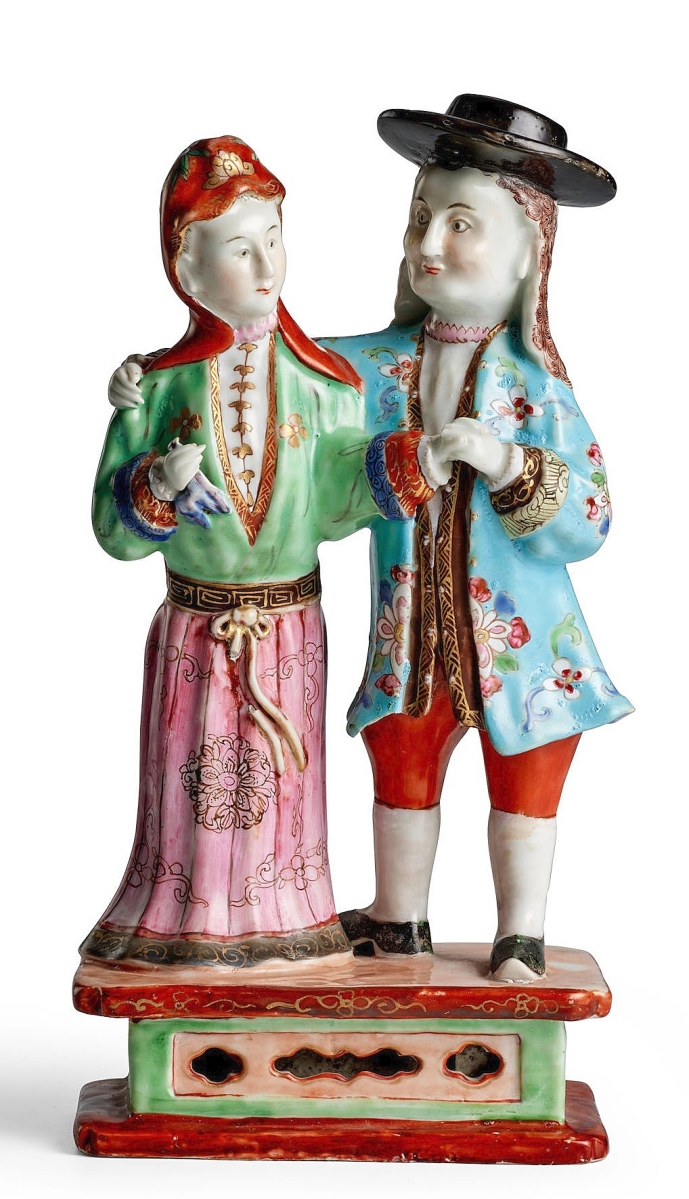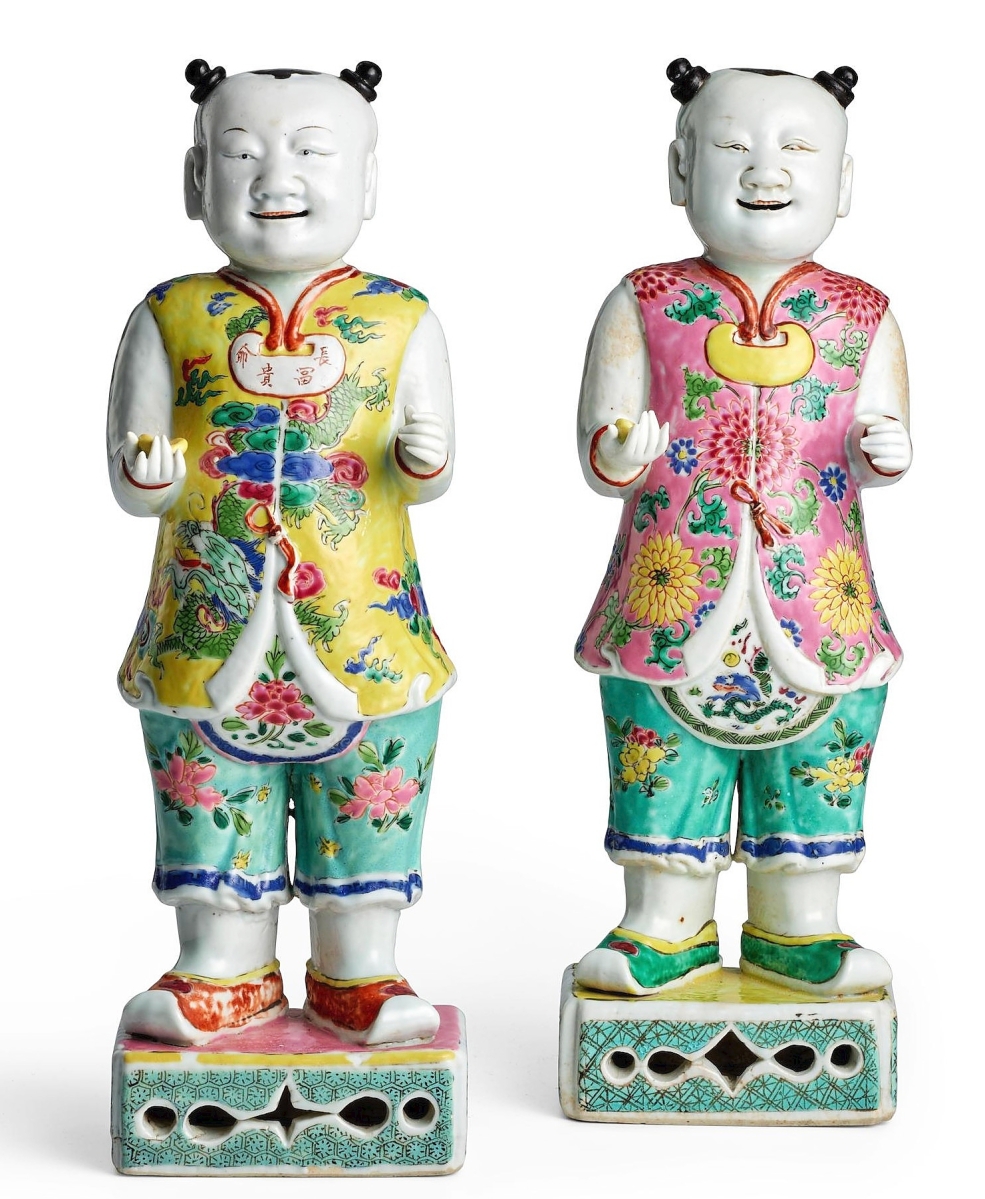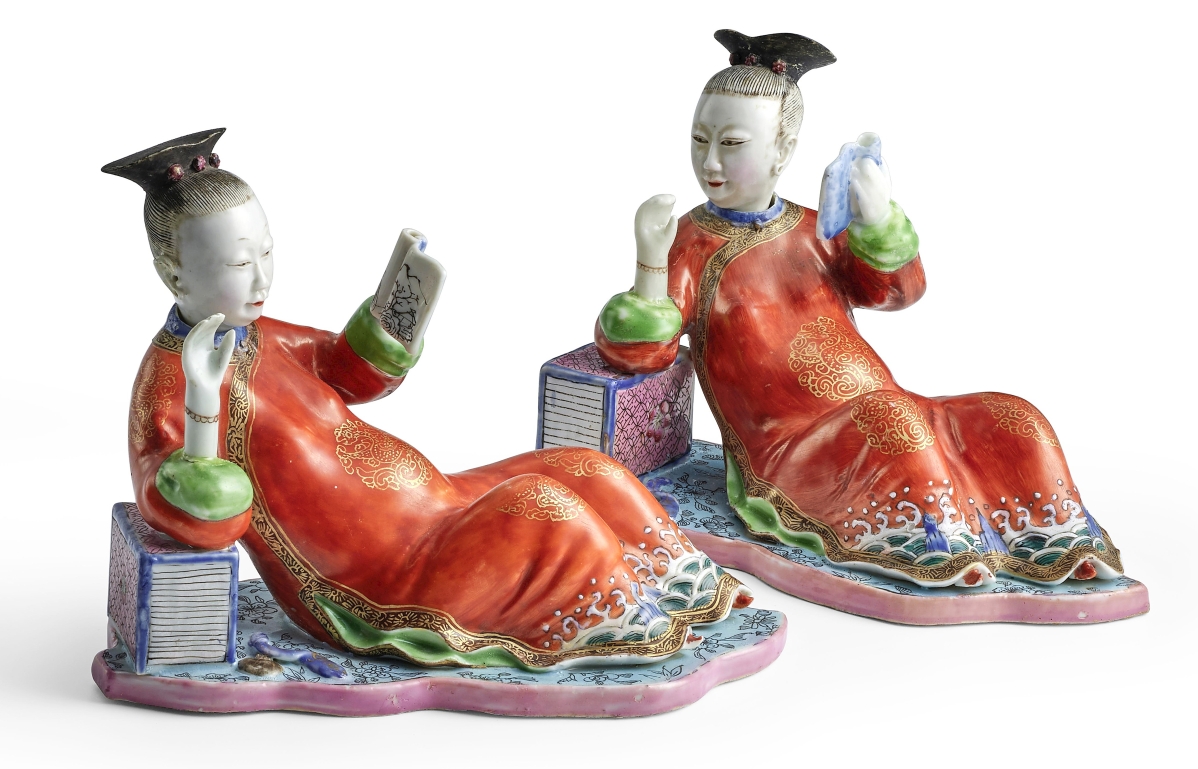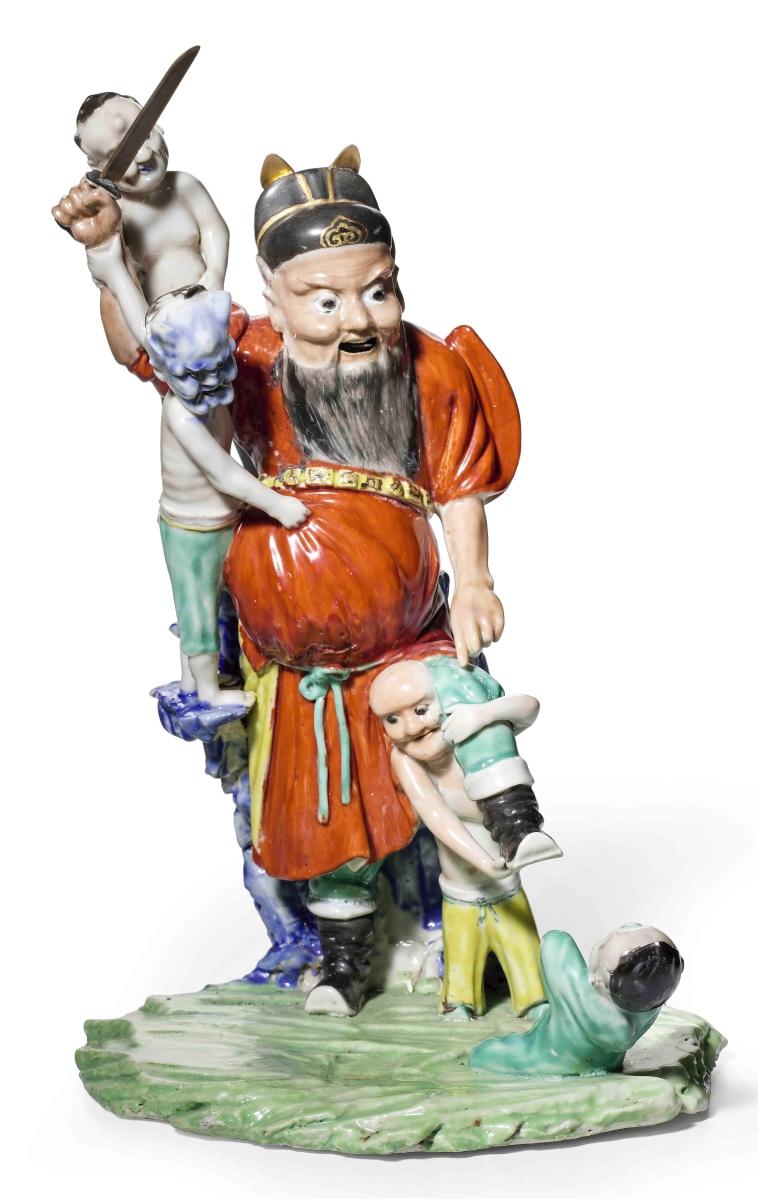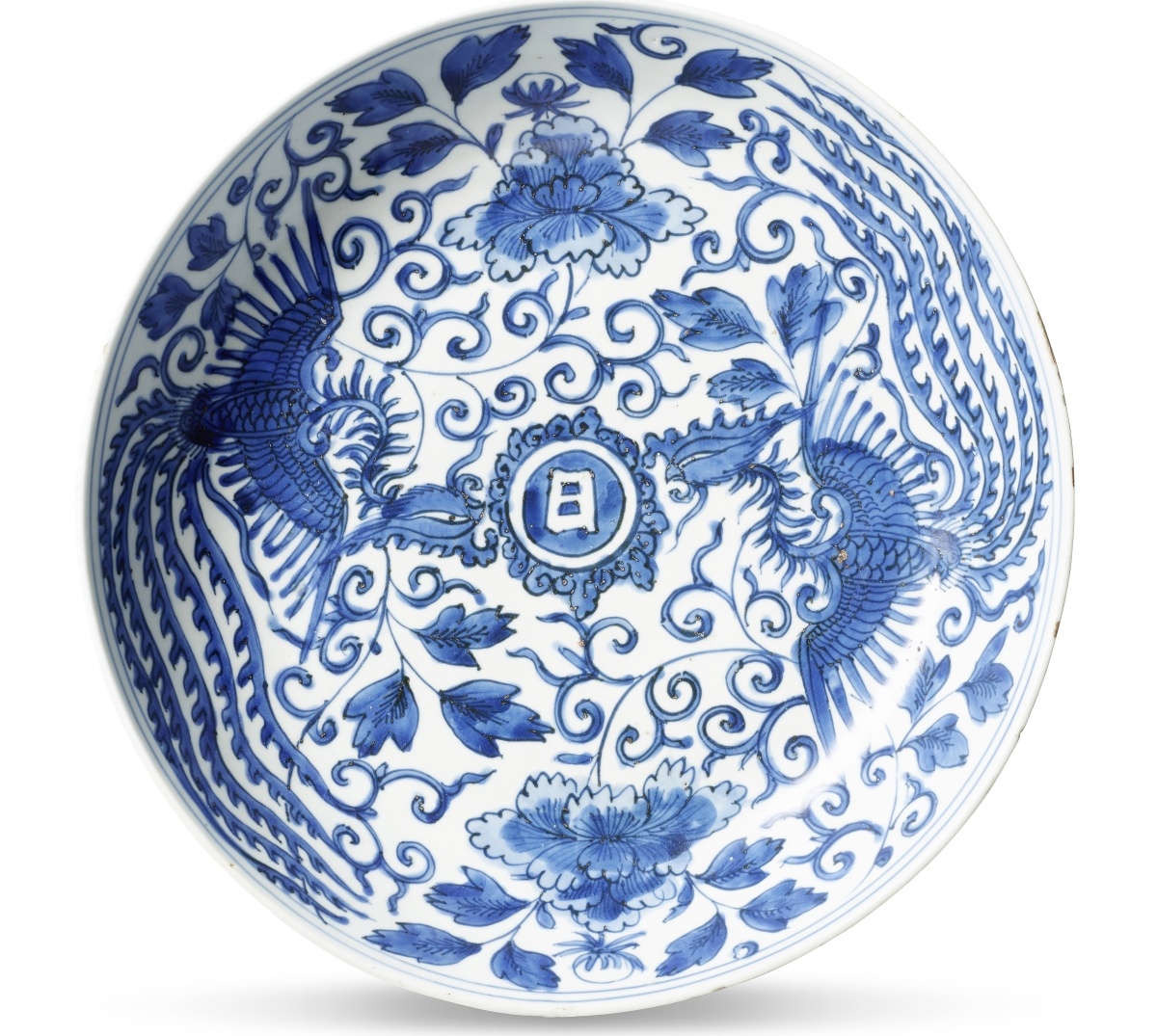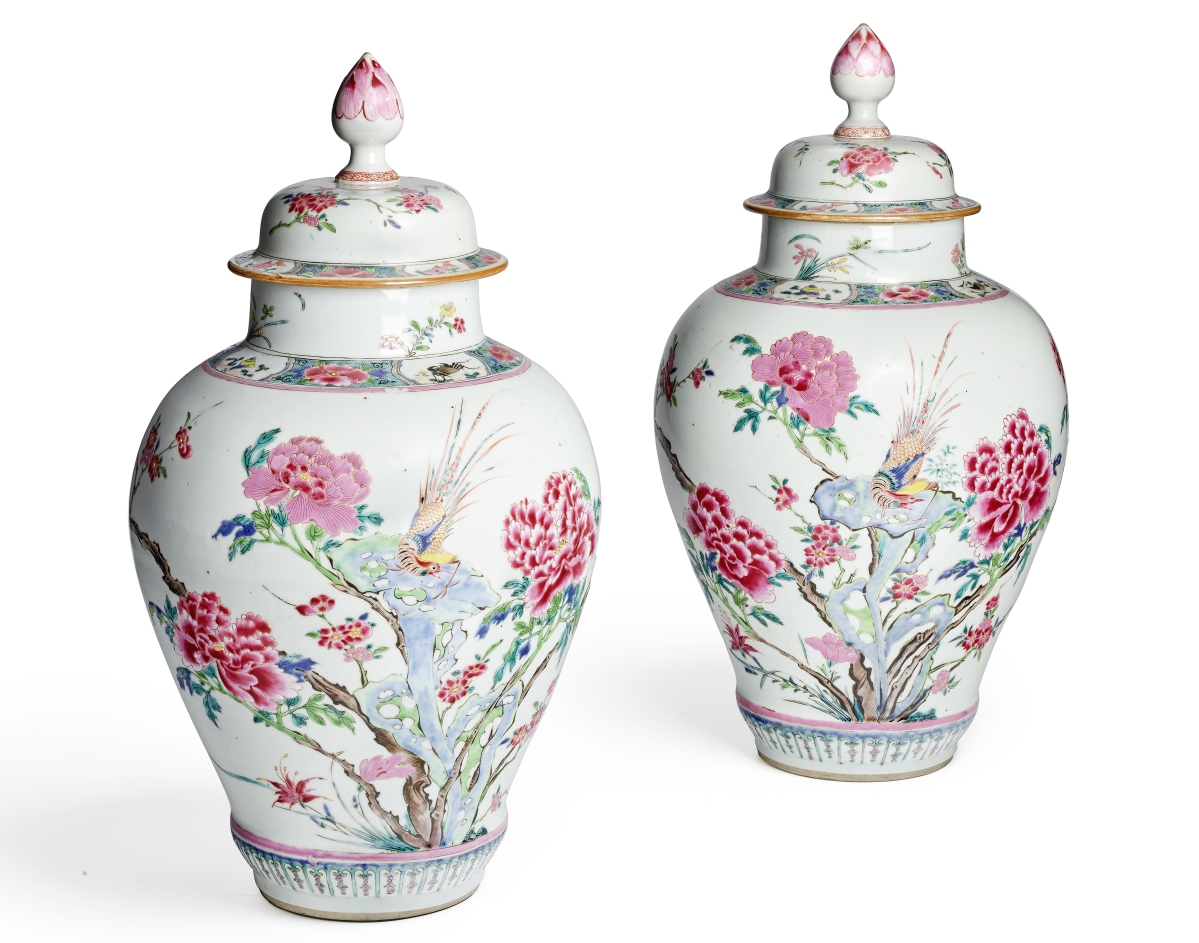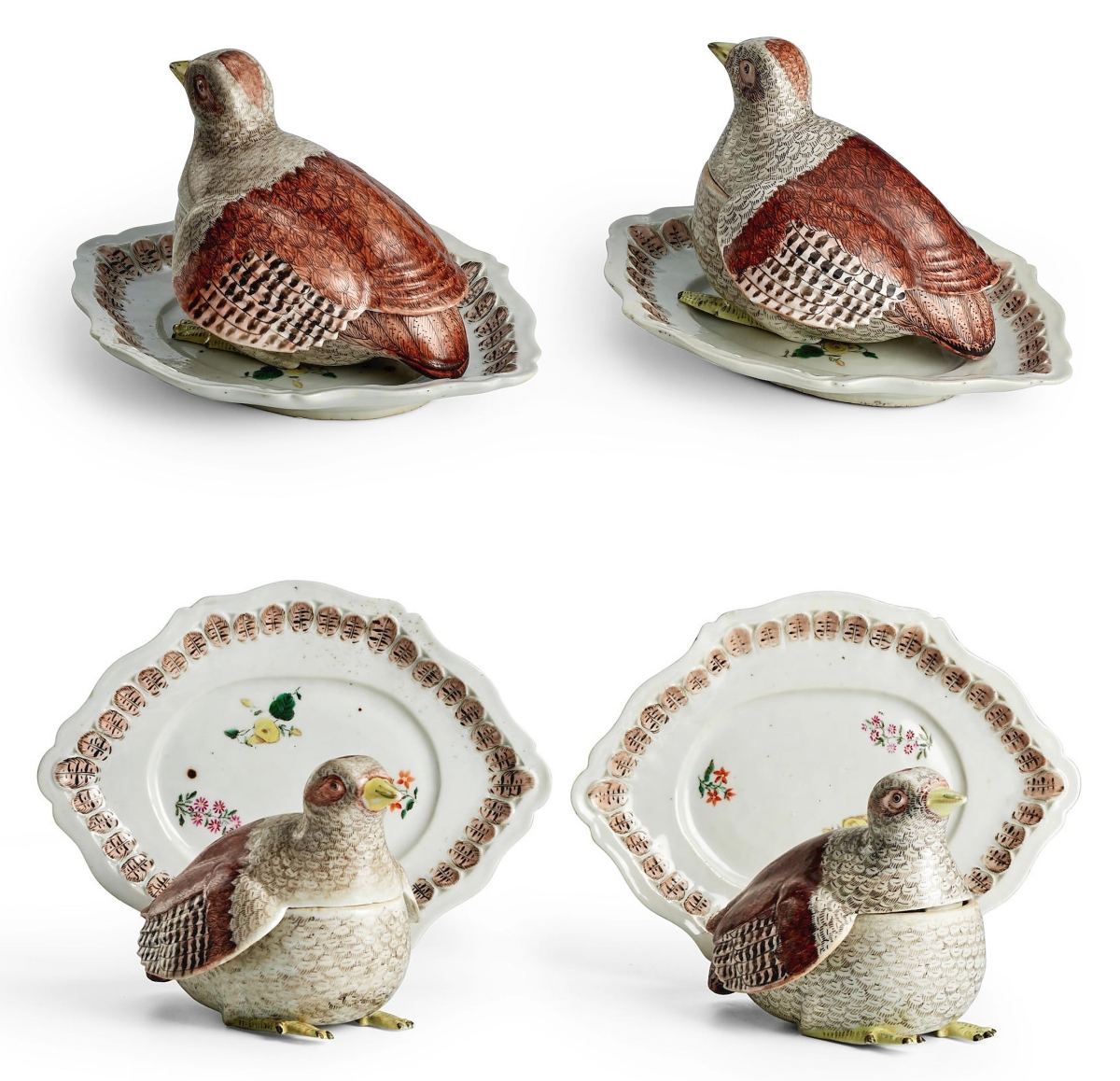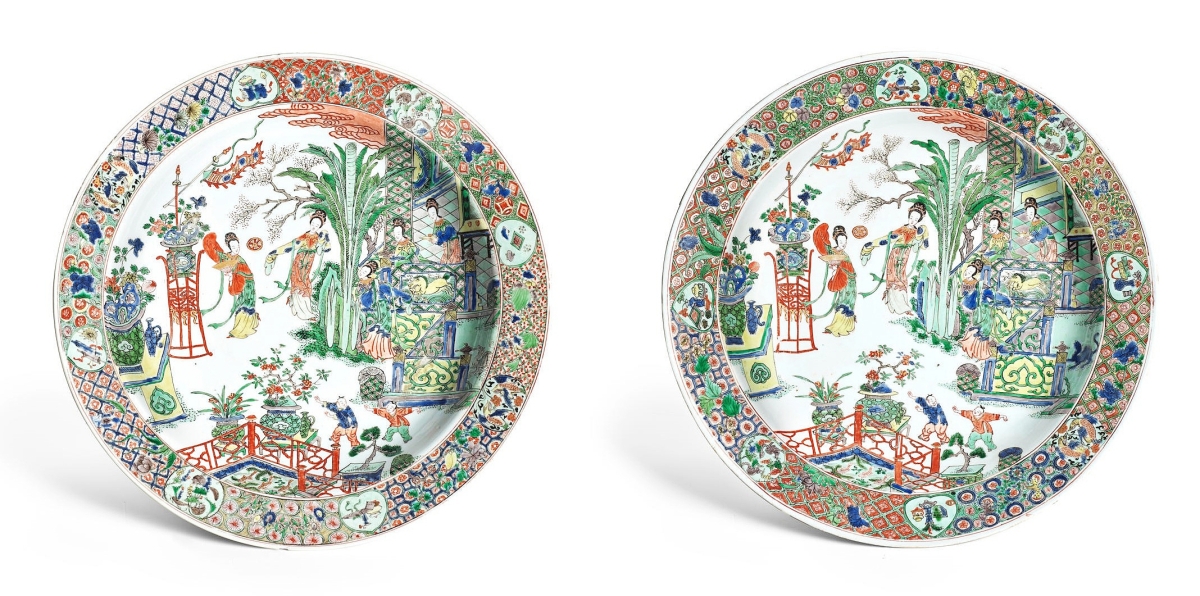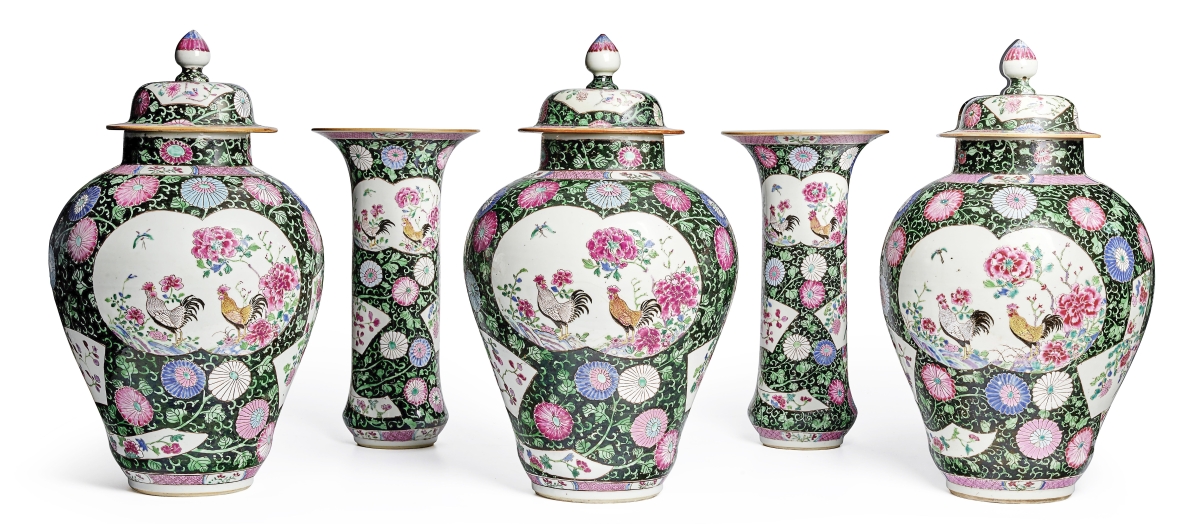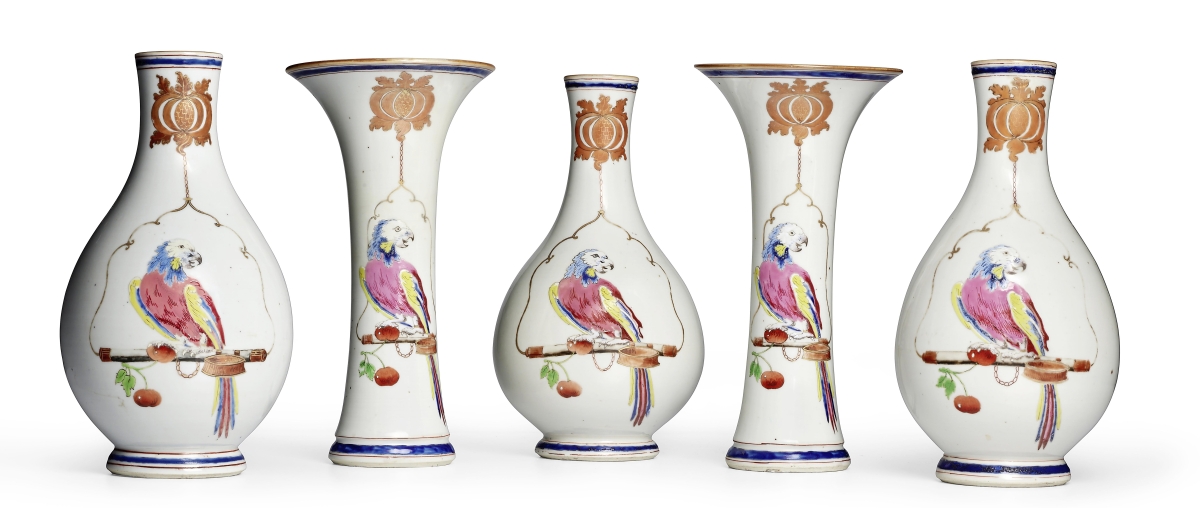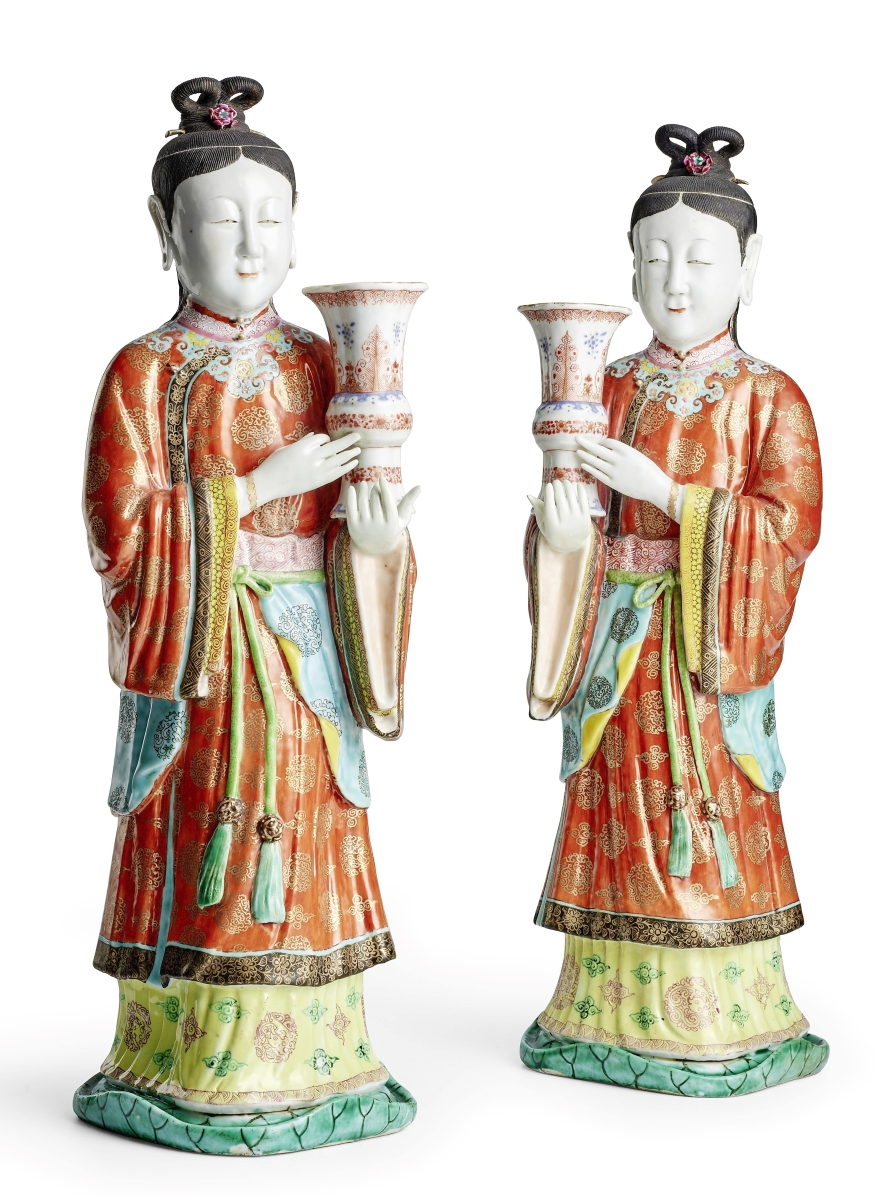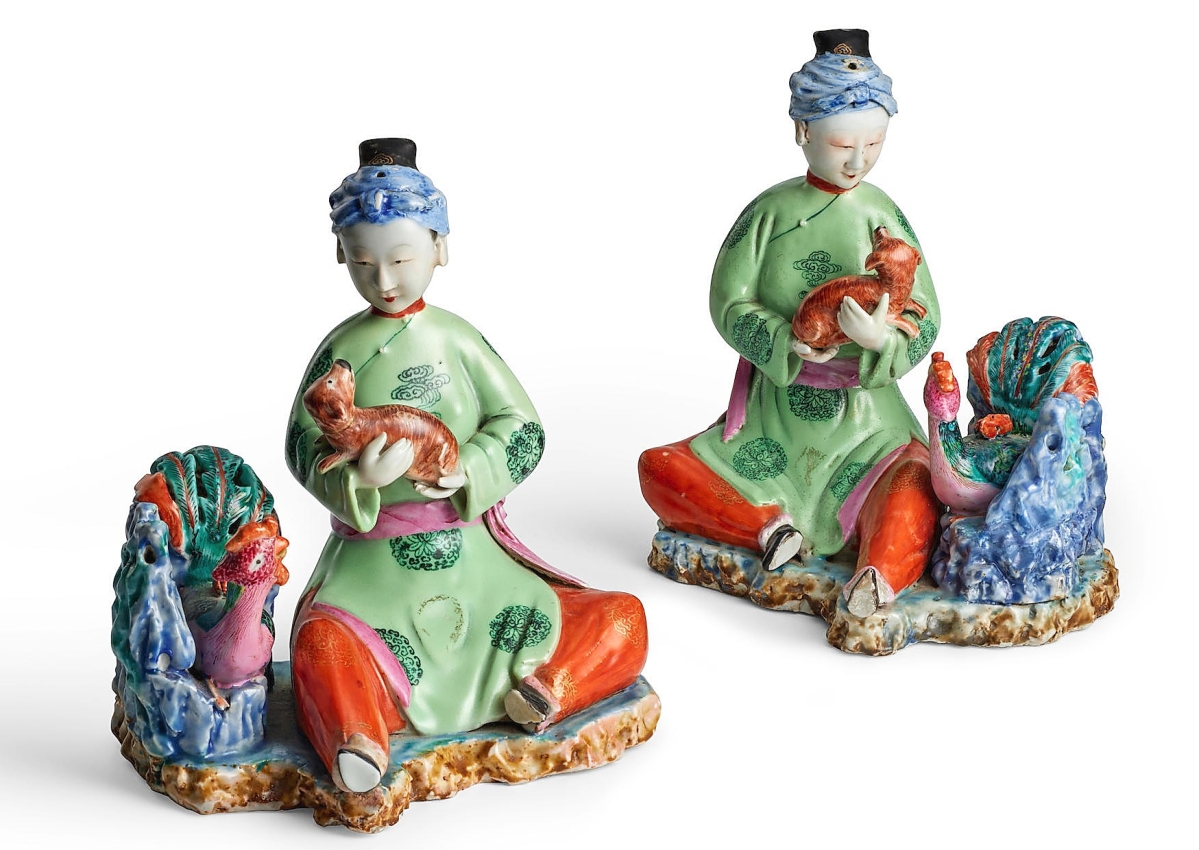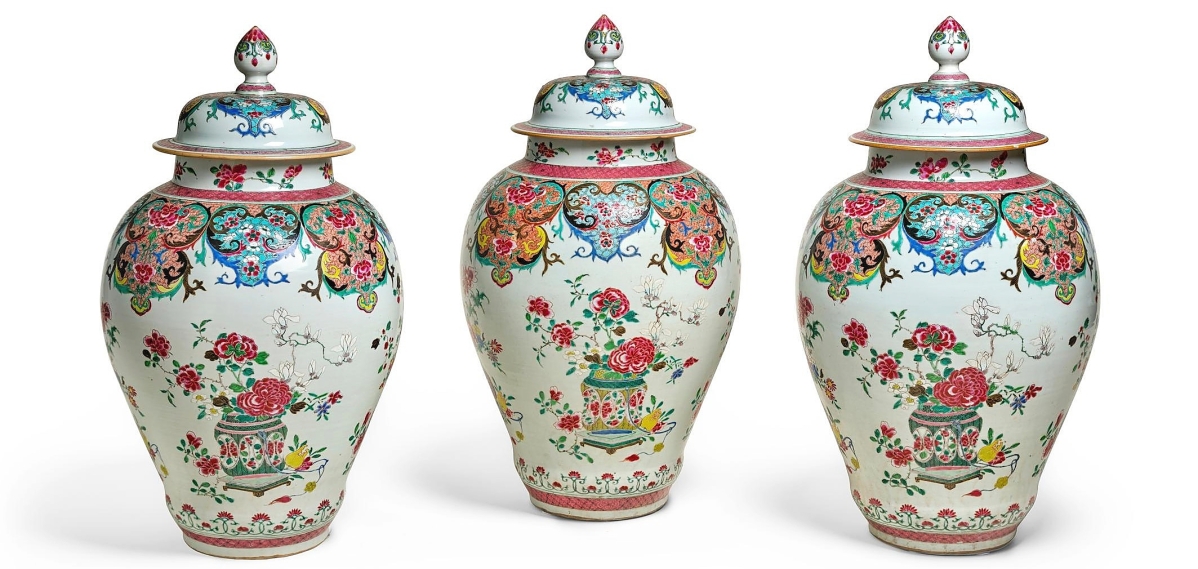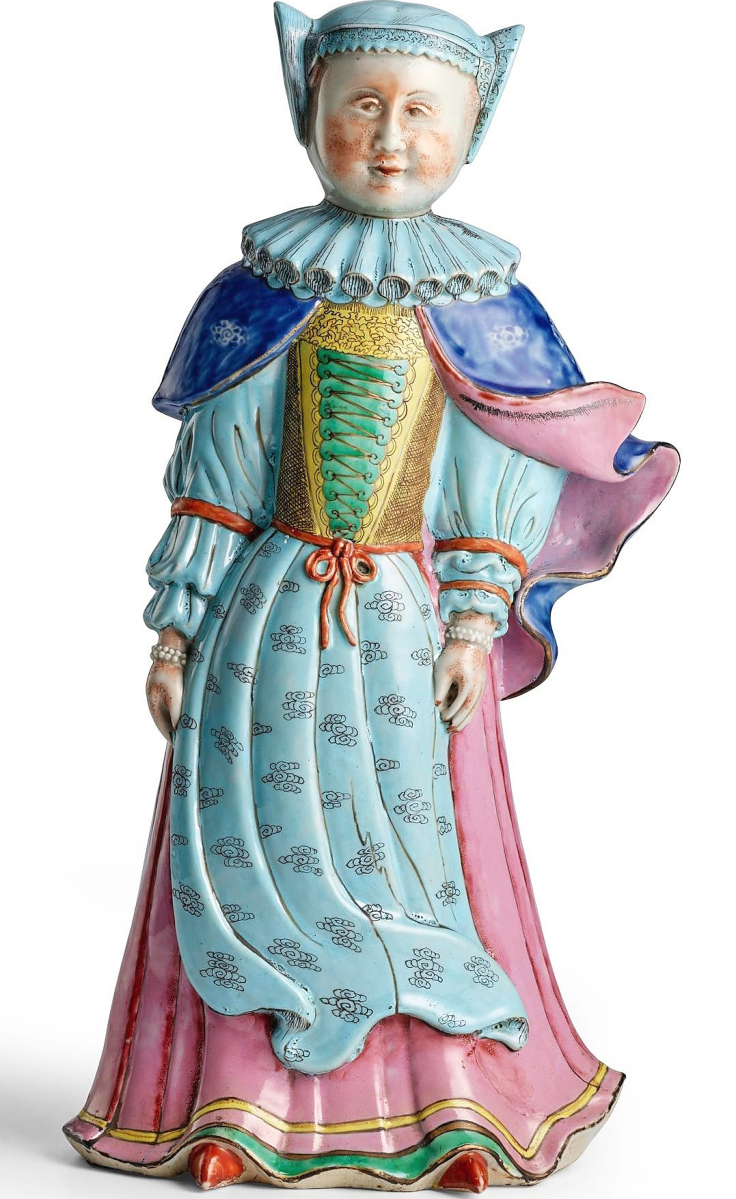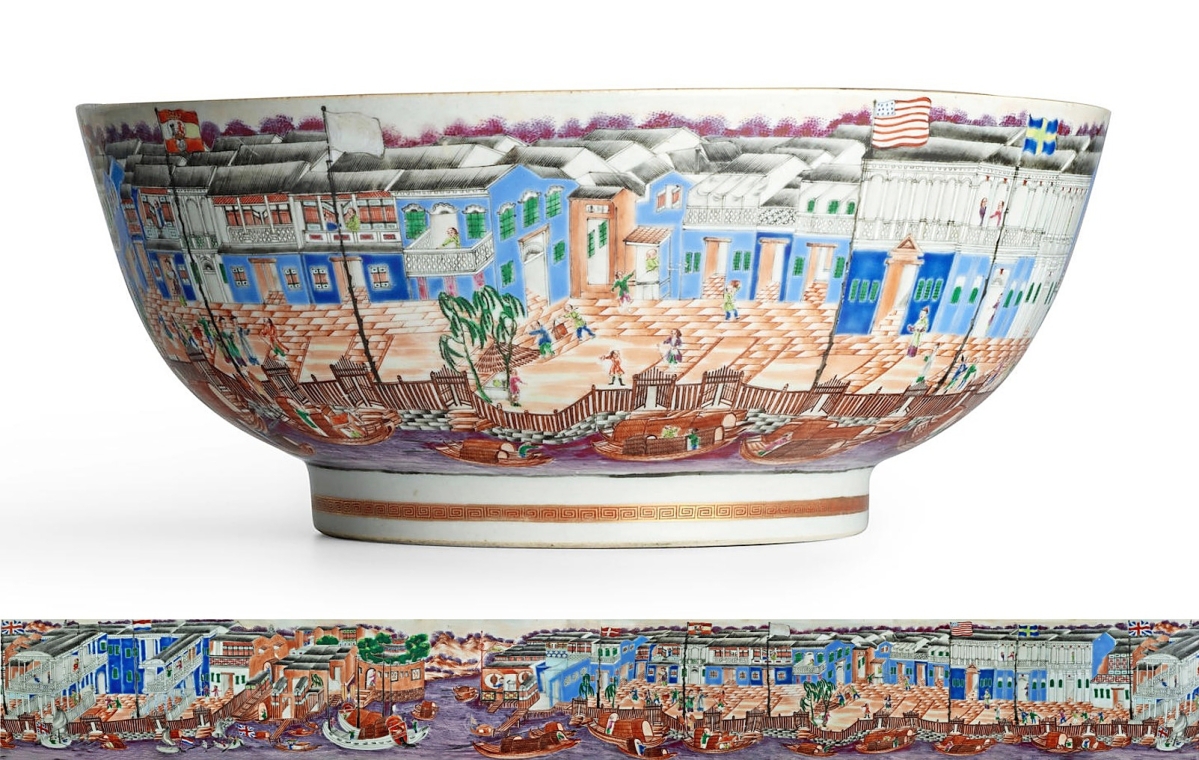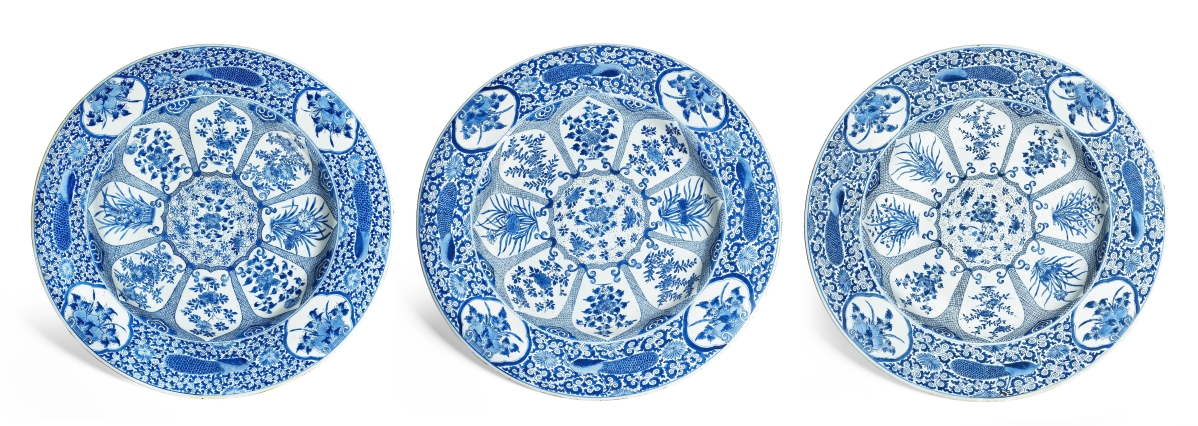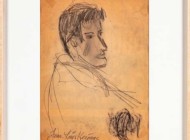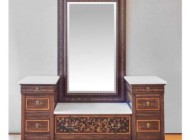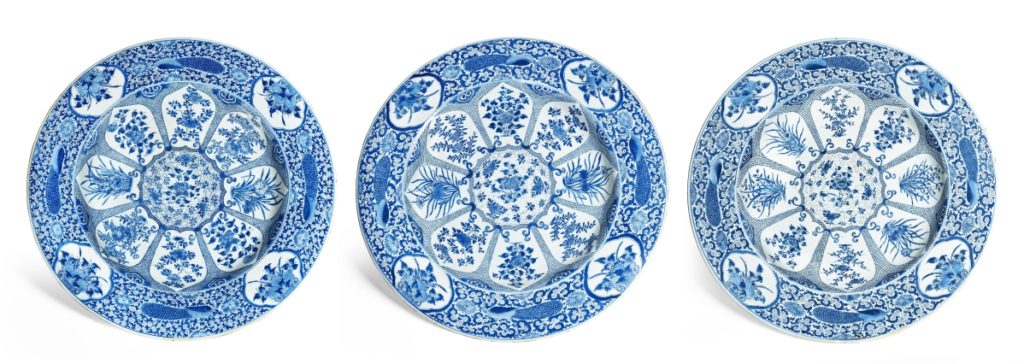
Painted in underglaze blue, this group of massive “Phoenix” chargers bid to $40,695.
Review by Z.G. Burnett, Photos Courtesy of Bonhams
NEW YORK CITY – On January 24, Bonhams hosted its “Cohen & Cohen: 50 Years of Chinese Export Porcelain” sale, offering 155 lots from the collection of Asian art dealers Michael and Ewa Cohen. The Cohens have been buying and selling export porcelain since establishing Cohen & Cohen in 1973, and the pair were ready for a change of pace. “Sometimes you just decide to take the boots off,” said Michael Hughes, vice president and head of Chinese works of art at Bonhams. “[The Cohens] will continue to work with their longtime clients, but they’ve closed their gallery in London and have moved to the country.” The pleasantly surprising results of the sale confirmed their decision, “They were chuffed.” Hughes continued, “Export porcelain has been in the doldrums, very hit and miss over the past 10 years. [The auction] was a small triumph… literally overnight we’ve become a house of choice for export.” And it’s no wonder; the sell-through rate was 85 percent by lot and 97 percent by value, with a total of $1.79 million.
The bidding pool also marked a change in the export market. Although the majority of buyers were from the United States and Europe, which is typical, there was a small percentage of Asian interest that was encouraging. The viewing was not very busy with a mostly Western attendance, yet there were about 30 in-house bidders for the sale. “It felt like pre-Covid days again, 30 people is an awful lot,” Hughes added. “It’s like we’ve turned a corner.”
The star of the auction was a very rare documentary famille rose bowl with scenes of a “United States Hong at Canton” that bid to $138,975. Hongs are Western waterfront trading houses, demarcated by country with international flags in this example, situated in Canton (Guangzhou). It was acquired by the Colonial Williamsburg Foundation, purchased with funds provided by the Joseph H. and June S. Hennage Acquisitions Fund. The bowl is a provocative piece of material culture due to its early representation of European merchants during the Qianlong period (circa 1787-88) “promenading and relaxing” in their enclosed, private courtyards. The earliest known bowl with panels depicting Hongs is dated to around 1765, and those appearing in continuous panorama such as this example date from about 1775. Other similar bowls from this time are in the collections of the Peabody Essex Museum, Salem, Mass., Historic Deerfield, Mass., and the Reeves Collection at Washington and Lee University, Lexington, Va.
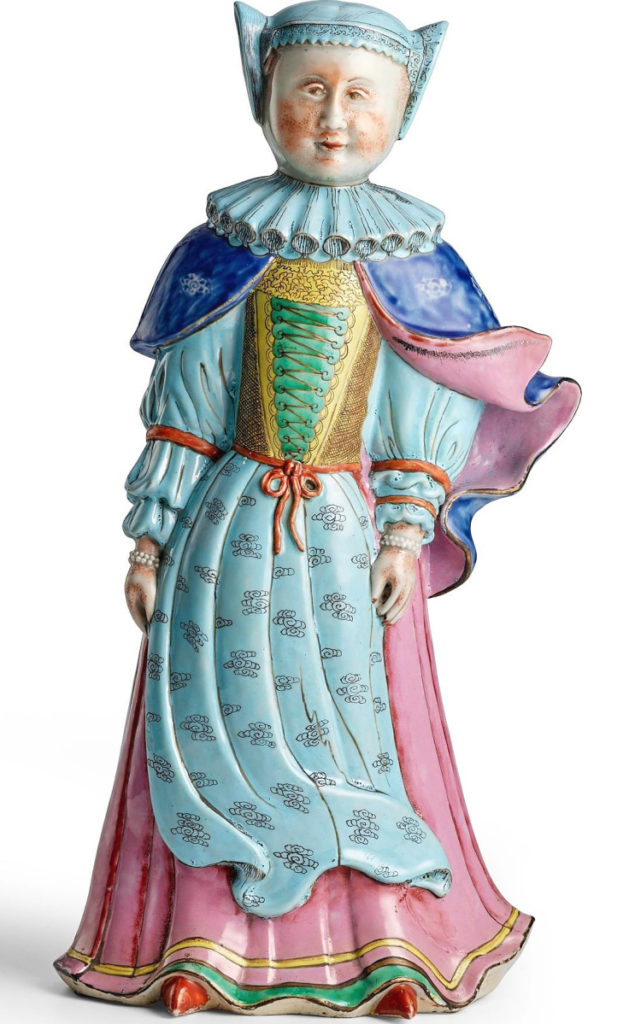
Standing at an unusual 16 inches, this fashionably dressed European lady figurine took second place at $88,575.
Second in price was another famille rose object from the Qianlong period (circa 1740), an important polychrome figure of a European lady. Brightly enameled and crisply modeled with a pleasant smiling face, the lady went to a new home for $88,575. Slighter later in the sale and in date was a rare famille rose group of a standing Dutch couple, also Qianlong period (1750-55). The gentleman was dressed in standard but brightly colored merchant class attire for the era, while his lady friend wore richly enameled Chinese-style garments with oleanders over her hair; the pair achieved $28,050.
Rare pairs of figures from various decades in Qianlong period were popular with bidders. The third highest price of the sale was collected by a pair of extremely rare famille rose reclining ladies, each holding bound painting albums, at $75,975. Dating from about 1750, the ladies showed all the fashionable accessories of their social station, and their separately molded heads were adjustable. A very large and rare famille rose pair of smiling boys measuring 13½ inches, apparently made from the same mold with their arms and hands in the same position around 1780, grew to $38,175. Another pair of ladies holding spaniels and seated next to phoenixes were modeled in mirror image to each other, and achieved $38,175.
Only two lots of blue and white porcelain reached the top lots, and both with good reason. A rare documentary saucer dated to the 22nd year of Wanli’s reign (1594 BCE) showed two dueling phoenixes circling the Chinese “ri” character for “sun” surrounded by peonies in the bowl, with three large Buddhistic lions interspersed with ribbon-wrapped balls on the exterior surface. On the base was an extremely rare documentary inscription, which helped the saucer read out to $62,115. Three later, massive chargers from the Kangxi period (circa 1700) measuring 21¾ inches across each also bid to success. The chargers were decorated with flowers and peacocks on the top surface and Daoist symbols with the sacred lingzhi fungus on the bottom, selling together for $40,695.
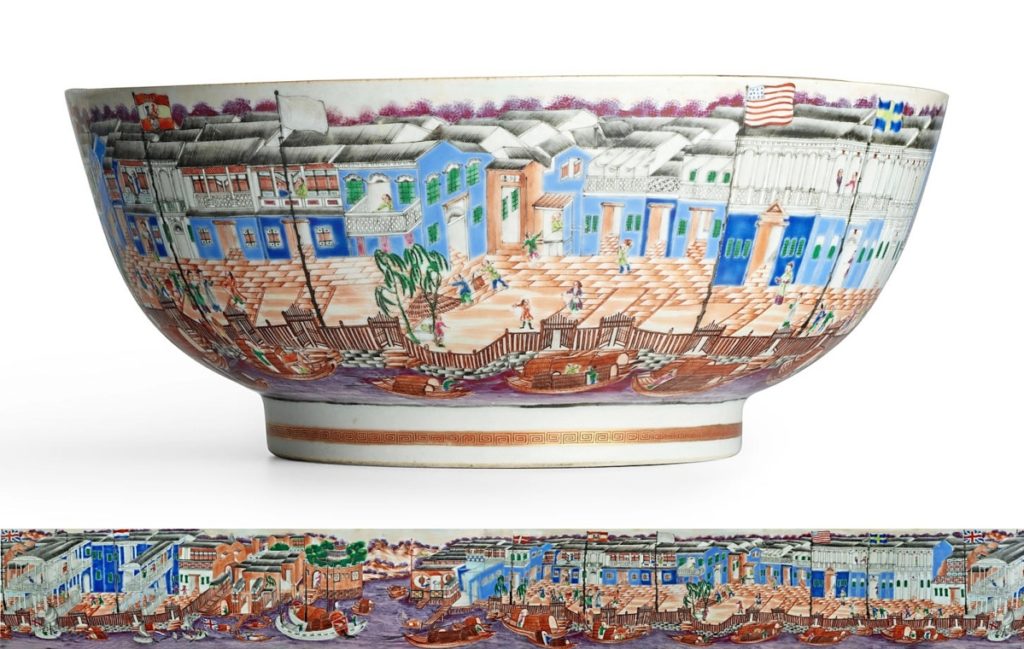
Showing Western merchants strolling in the private gardens of their Hongs, or waterfront trading houses, the panoramic scene (detail) propelled bidding for this very rare Qianlong period famille rose bowl to $138,975.
Avian motifs were favored in the sale. Enameled “confronted cockerels” adorned a very fine and large famille rose black-ground garniture, composed of three oviform covered jars and two beaker vases, along with chrysanthemums, peonies and butterflies. Made between the reign of the “porcelain obsessed” Yongzheng and the Qianlong period (1730-40), the set achieved $50,775. Another five-piece famille rose set with three vases and two beakers, enameled with a parrot perched on a swing holding a cherry branch in its beak, alighted at $31,875. Provenance of the set included the Leo and Doris Hodroff collection.
Qianlong famille rose jar sets were also in demand. An extremely fine and large three-piece garniture of three broad-shouldered oviform jars with a raised flange above the foot and matching domed covers closed at $38,175. Dating from the intermediate period around 1740, the jars were elaborately decorated with baskets of flowers and alternating floral lappets at the shoulder. A pair of baluster-form jars made about 10 years later, painted with pheasants, peonies and lotus buds, matched this price at $38,175.
Prices quoted with buyer’s premium as reported by the auction house. Bonhams’ next Chinese Ceramics and Works of Art auction will occur on March 20 and 21.
For more information, 212-644-9001 or www.bonhams.com.

